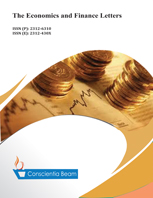What Causes Differences in PM2.5 Concentration in China? Structures are more Important
DOI:
https://doi.org/10.18488/29.v9i1.2936Abstract
This paper studies the effects of factors such as economic growth, industrial structure and governance on the differences in PM2.5 concentration among groups by using Oaxaca-Blinder (OB) decomposition and Recentered Influence Function (RIF) regressions. Specifically, we first explore the differences in PM2.5 concentration among cities and find that structure effects attributable to differences in returns to these factors contribute more to total difference in PM2.5 concentration than composition effects caused by differences in the means of these factors. Moreover, the offsetting effects of positive composition and negative structure effects drag the time trend of PM2.5 concentration downward. Besides, the negative impact of GDP per capita on PM2.5 concentration implies the existence of an inverted U-shaped environmental Kuznets curve (EKC) between PM2.5 concentration and GDP per capita. In sum, we find that the differences in returns to factors or structures of cities are the main causes of differences in PM2.5 concentration among cities in China compared to the differences in the means of factors.

